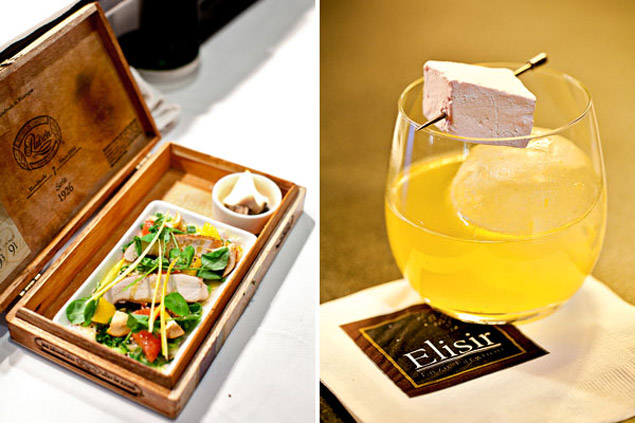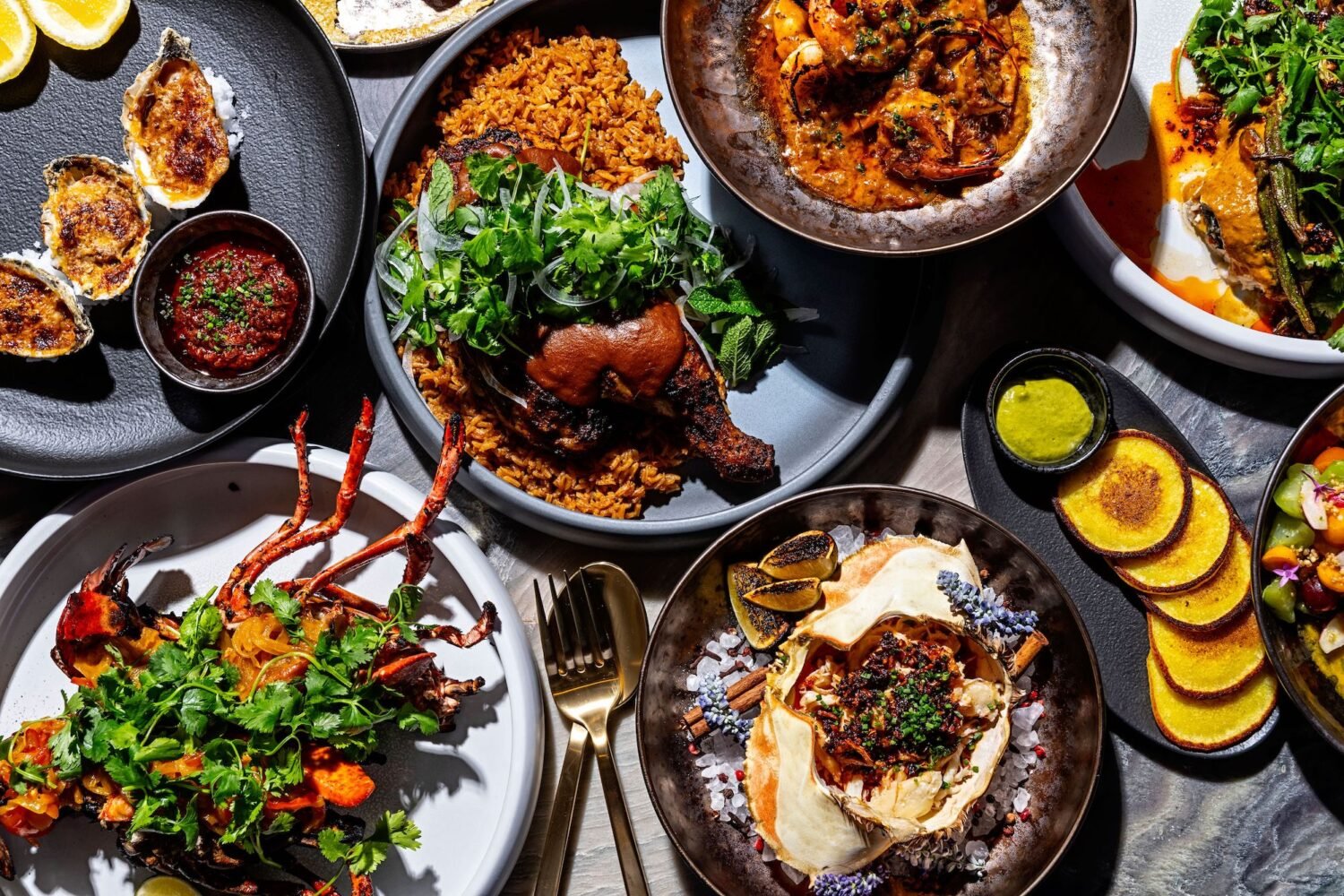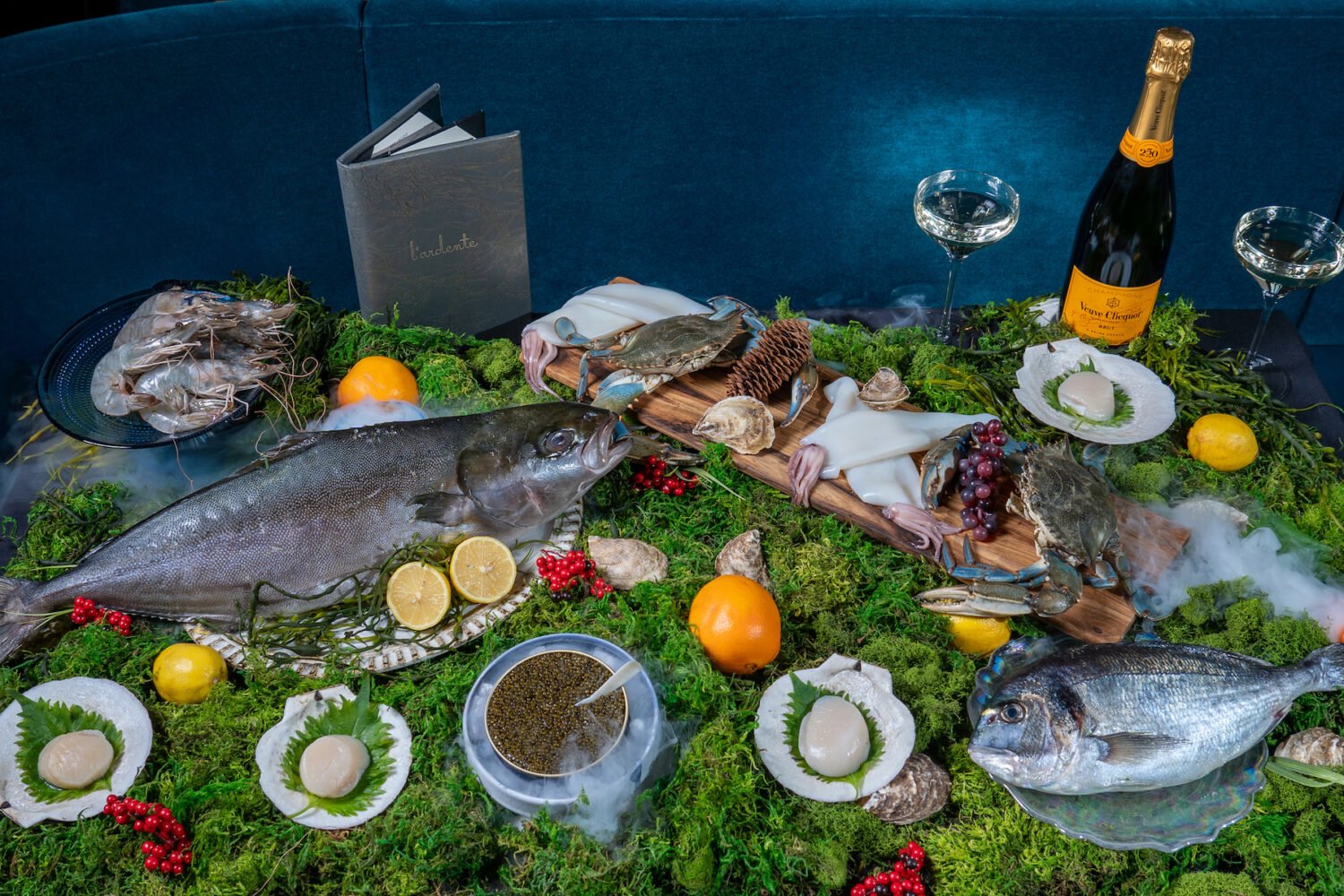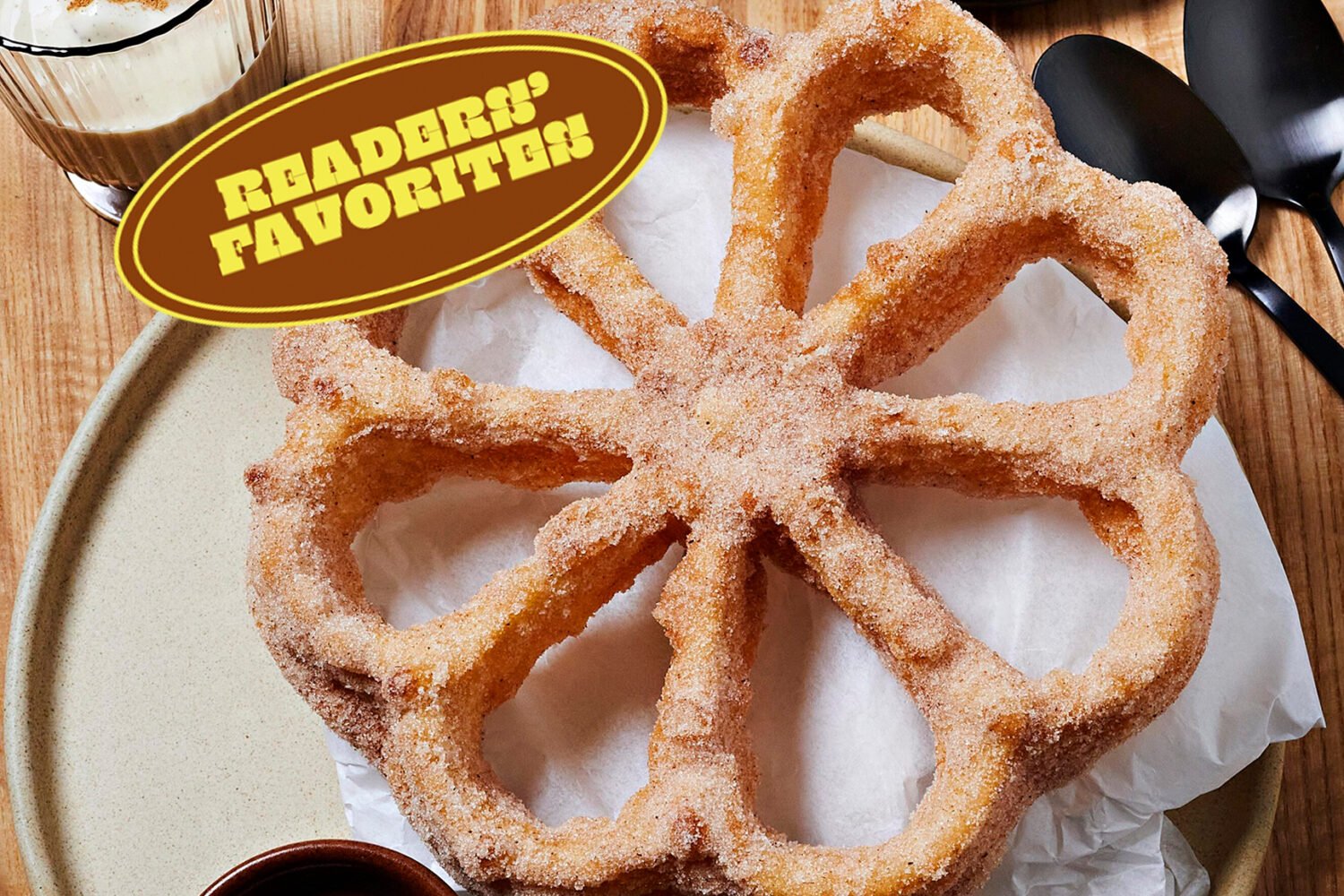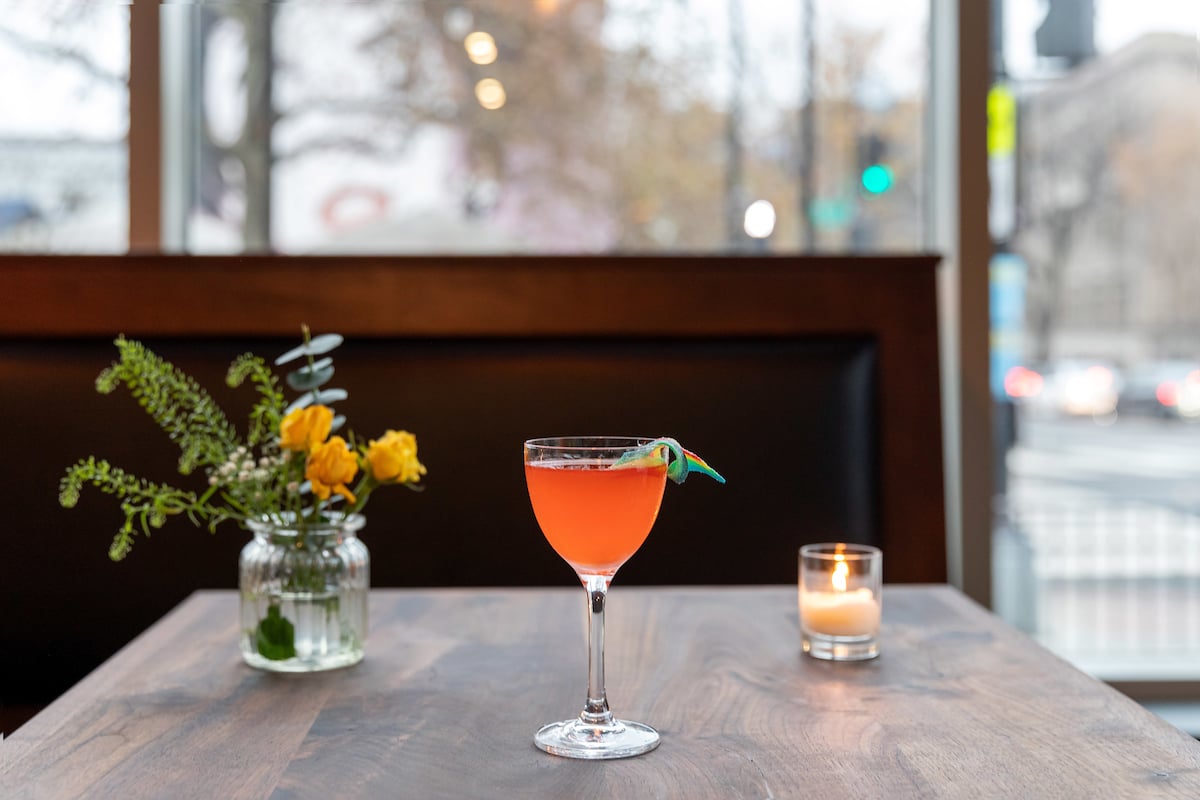Slideshow: A Look at Elisir
The novelist Stanley Elkin once defended his maximalist sensibility in an age of minimalist storytelling, quipping: “I don’t believe that less is more. I believe that more is more. I believe that less is less . . . and enough is enough.”
In this age of the minimalist restaurant, less is more–or so we’re often made to feel. Everything is compacted (the size of the plates) or stripped away (the maître d’, the tablecloths) in the name of accessibility, comfort, and value. It’s sometimes hard to remember what restaurants used to be.
Then you step into Elisir, a swank new Italian restaurant that occupies a dead-zone block in the western end of bustling Penn Quarter. Its chef and owner, Enzo Fargione, is Elkin’s kind of maximalist. Fargione piles on the details. Waiters sport coats and ties, napkins are fashioned into scallop shells, menus resemble framed diplomas, and there are two tasting menus of seven or ten courses.
If the menus don’t deliver the message, then the plates stamped with Elisir’s logo ought to. Grandiosity permeates the operation, from the “studies” of fennel and chocolate and “a deconstructed winter apple pie with cinnamon fumes” to the closed-circuit TVs in the dining room that bring to life Margaret Cho’s joke that watching food shows while eating dinner is like having sex while watching a porn film (in this case, very dull porn–all you can see is the chef’s hands salting and garnishing).
Fargione is a veteran of the local dining scene, having come through the pipeline of Roberto Donna, one of the most influential chefs ever to cook in Washington. Fargione ran the kitchens at Barolo on Capitol Hill; at Donna’s flagship, Galileo; and at his tasting-table restaurant, Laboratorio. But it wasn’t until he commandeered the stoves at Teatro Goldoni, in 2008, that Fargione found his voice. His canonical mastery (a brilliant lobster risotto) and whimsical daring (a carpaccio of branzino presented in a cigar box that sent up plumes of applewood smoke) transformed a middling restaurant into one of the area’s top dining destinations.
To watch him at work under the lamps of his open kitchen at Elisir is to watch a perfectionist with exceptional powers of concentration and an intensity that carries over to the plate. If Fargione were a director, he would be the Hitchcock of Psycho, all baroque theatricality, or Oliver Stone, for whom every moment of every scene is an opportunity to drive home the message.
Most chefs would be content to make a perfect risotto. Fargione produces a dish whose grains are distinct and elegant despite being bathed in ridiculous amounts of cream, cheese, and butter–but then he turns the dish into a vehicle for saffron, swirling in so many aromatic filaments that it shows up on the TV screens as a blazing sunset. The effect is hypnotic on the palate, too, though a little goes a long way. I haven’t even mentioned the small portion of braised veal cheeks in the middle, a dish within a dish.
A preparation of duck breast, reprised from Teatro, is likewise intended as a showcase; it might have been dubbed Study in Salt. But this isn’t salt used indiscriminately. Fargione pairs the meat–which is cured, then smoked, then seared (its color and taste put you in mind of bacon)–with a briny black-olive sauce. Duck is the putative star of the dish, but it’s the way the chef explores the spectrum of saltiness that stays with you.
Veal with sweetbreads in a mascarpone/orange-blossom sauce reads like a disaster, but it falls just short of wickedly inspired, the decadent, lightly floral sauce underscoring the creamy richness of the sweetbreads and accenting the sweetness of the medium-cooked meat, while the sweetbreads themselves echo the character of the veal.
There’s a word in Italian for the difficult thing pulled off without apparent effort: sprezzatura. It’s not a Fargione kind of word, and I say that despite his obvious technical mastery. At no moment are you allowed to forget that a virtuoso is behind these dishes, but the larger aim is to demonstrate that Italian food is not merely a cuisine of simplicity but one that also embraces intricacy, delicacy, and complexity.
Sometimes it’s a color juxtaposition (a sublime plate of roasted peppers and artichokes), sometimes a painterly composition (a pointillist presentation of vitello tonnato,tuna-mousse-filled bundles of thin-sliced veal surrounded by quail eggs, potato cubes, and mâche). A humble minestrone becomes a bravura piece of theater with carrots and potatoes carved into perfect spheres and a pesto-scented broth poured tableside from a small pitcher. It tastes even better than it looks.
One of the best dishes is the simplest–thin, crisp-edged slices of intensely flavored porchetta served with baby potatoes and broccoli rabe: Sunday supper elevated to haute cuisine.
Fargione falters occasionally–overrichness is a weakness–and some dishes would be better left alone. Twice I ordered his charred octopus, and twice I wondered what he sees in this marriage of sweet meat (a dead ringer for poached lobster) and sweeter sauce (a candy-like concoction built from raw polenta). The cigar-box branzino is back, but this time accented with sliced mushrooms that neutralize the marinated fish’s citrusy pop. And the tableside service that makes sense for the soup becomes parody with a reinvented carbonara; I think most diners could manage to pierce a not-quite-poached egg and mix the yolk into the pasta themselves.
Lavishing diners with attention is one thing, but at Elisir it doesn’t take much to go from attentive to smothering. By my third visit, I was counting how many times someone came by with the bread basket (six). And given the playfulness on the plate and the sounds of techno drifting through the air, it’s jarring to see the waitstaff conduct itself with an undertaker’s formality. The handsome but featureless room–in sonorous tones of brown, gold, and orange–doesn’t help.
Dessert is the exception to the more-is-more rule. For $12, you might expect a shareable plate or a final course that pushes the boundaries of the conventional. The deconstructed apple pie with cinnamon fumes is the only one that defies the rules, a presentation of pie elements disassembled and set alongside a smoking trough of spice. (I doubt you’ll come away wowed. You may, however, feel the need to blow your nose.)
At the moment, the best way to think of Elisir is as an overexposed photograph. Everything is at the same intensity; everything pops. A little lightening up here and there, a little softening of the extremes, and the moments of brilliance ought to register with greater vividness and drama. Sometimes less really is more.
This article appears in the March 2012 issue of The Washingtonian.
No. 2.5

